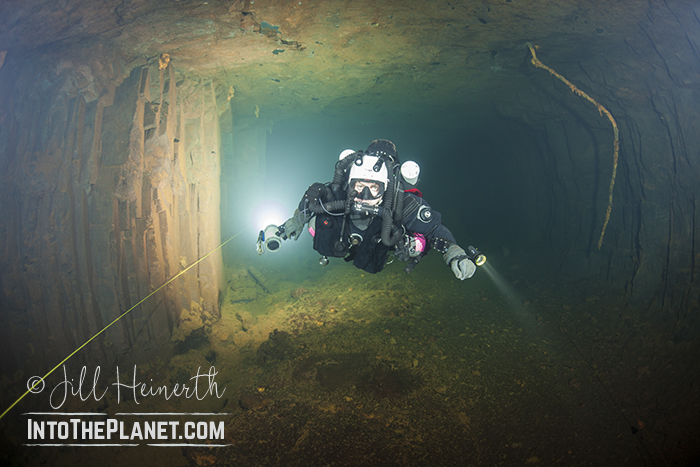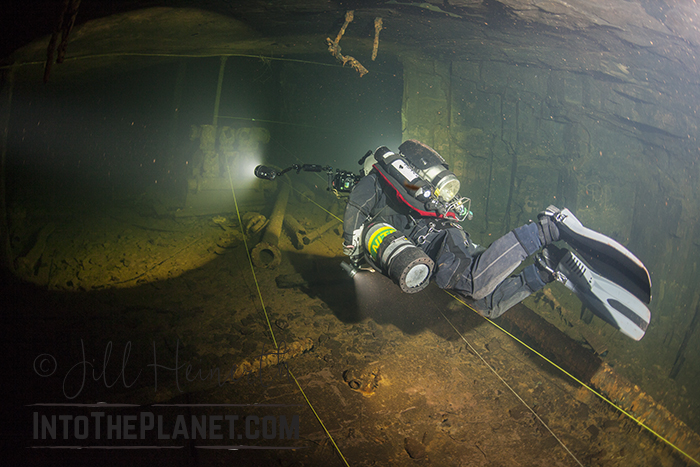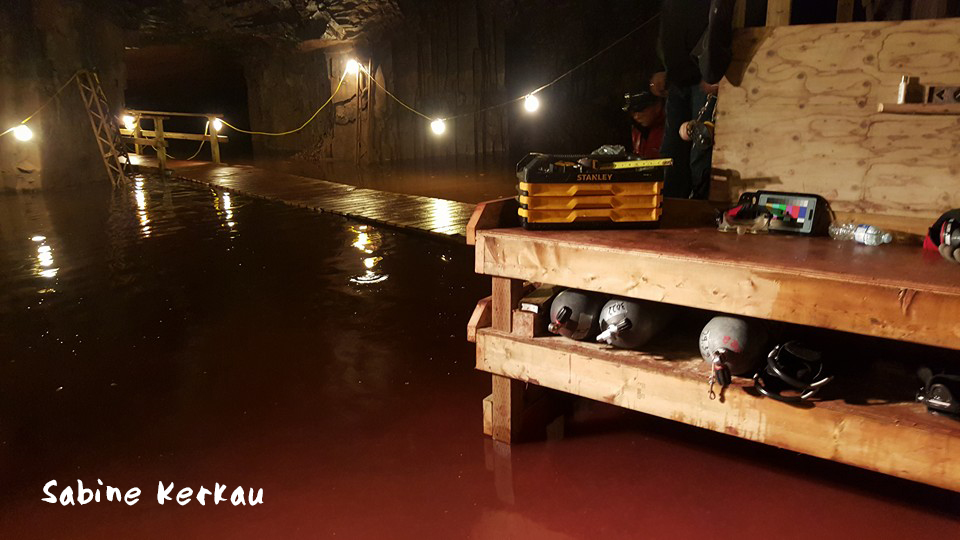Today we arrived at the mine to discover a major river running down the slope. With the intense rain and snow melt on the island, all the water had to go somewhere. When we walked down to the dive staging area we were shocked to discover that we had lost more than 20 feet of waterfront. The dock was close to the ceiling and the benches and staging area were submerging. It was simply not safe to use our walkways and dock.
Not to be discouraged, the skeleton team jumped into action. Volunteers were unable to make it across The Tickle on the ferry, so we were a little short handed. All hands moved tanks, tables and gear and deconstructed the lighting system and rest of the infrastructure. Repairs will need to be made when the water level drops. The water came up six feet through the day. With a hard freeze tonight, we are hoping the inflow subsides.
The rushing water also destroyed visibility for a significant distance. Cas Dobbin and I entered the water in another column and groped through 250 feet of zero-visibility muck. When we finally emerged from the clay colored water, we could see white misty in-feeding seeps further polluting the visibility. We made our way down to 130 feet of depth and spent some time shooting equipment near the pumping station. We found a lot more interesting graffiti and even managed to identify one of the people named on the wall. His friends were assisting at the mine and told us about his prowess playing strongman on their hockey team.
Cas and I were the only ones eager to make a second dive. We worked on a video mission and searched for the best area to lay line the following day. The visibility seemed to be best on the east of our entry, as far away as possible from the in-feeding meltwater. Our dive went well until our decompression stop when Cas tore a mouthpiece and experienced what we call a caustic cocktail. Water leaked into his rebreather and mixed with the carbon dioxide absorbent material, creating an alkaline fluid that can burn the mouth. We were in inches of visibility when he quickly switched off his loop and got on open circuit air. He coughed and I reached out to hold him. The scuba air was the same temperature as the water at 3 degrees, so he became quickly chilled. Rebreathers create an exothermic reaction that gives a diver warm moist air to breathe. Traditional scuba is like inhaling freezing air, chilling the diver more quickly. Cas handled the emergency like a really well practiced explorer and managed through the chill to complete his full decompression obligation.
After the dive, we jumped right into our medical tests and learned many more new things about decompression stress. I’ll leave the details for a future blog, but suffice to say, the medical research being done here is incredibly valuable to the team and to understanding extreme dive profiles. We are grateful for Neal Pollock and Stefanie Martina who have to put in days as long as ours to collect the important data.



